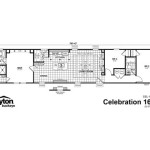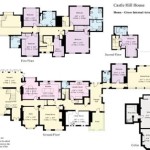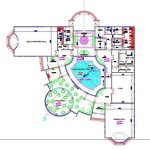How to Draw Electrical Plan for House
An electrical plan is a technical document that illustrates the electrical system of a house, providing details about the location of electrical components, circuits, and wiring. It serves as a roadmap for electricians during installation and maintenance, ensuring safety and compliance with electrical codes.
Creating an electrical plan involves several essential aspects:
1. Site Inspection and Planning
Before drawing the plan, conduct a thorough site inspection to assess the existing electrical infrastructure and identify potential electrical needs. Determine the number and location of electrical outlets, switches, fixtures, and appliances. Consider the future expansion plans and allocate adequate electrical capacity.
2. Establish a Scale and Symbols
Select an appropriate scale for the plan, such as 1:50 or 1:100. Use standard electrical symbols to represent different components. Consistency in symbols ensures clear communication and avoids confusion during installation.
3. Draw the House Layout
Start by drawing the floor plan of the house, including walls, doors, windows, and other architectural features. Indicate the location of the electrical panel, main breaker, and other electrical equipment.
4. Mark Electrical Outlets and Switches
Plot the location of electrical outlets and switches throughout the house. Indicate the number of outlets on each circuit and the type of switch (single-pole, three-way, etc.). Consider the spacing requirements and accessibility of electrical devices.
5. Plan Lighting Circuits
Designate the lighting circuits on the plan, indicating the location of light fixtures, switches, and wiring. Determine the wattage and type of lighting fixtures for each area. Consider the illumination requirements and aesthetic appeal.
6. Detail Electrical Wiring
Indicate the routing of electrical wires and cables on the plan. Specify the wire gauge, type, and method of installation (conduit, cable tray, etc.). Ensure that the wiring meets electrical code requirements for safety and efficiency.
7. Mark Panel Schedule and Circuit Legend
Create a panel schedule that lists the circuit breakers in the electrical panel. Assign each circuit a number and identify the corresponding electrical components connected to it. Include a circuit legend to define the symbols used on the plan.
8. Review and Revision
After completing the electrical plan, carefully review it for accuracy and completeness. Check for any errors or inconsistencies. Consider feedback from architects, engineers, or electricians to ensure the plan meets all requirements.
Conclusion
Drawing an electrical plan for a house requires technical knowledge, precision, and adherence to electrical codes. By following these essential aspects, you can create a clear and comprehensive plan that guides the safe and efficient installation and maintenance of the electrical system.
Create An Electrical Plan Roomsketcher Help Center

Free House Wiring Diagram Edrawmax

How To Draw An Electrical Plan With Roomsketcher

Electrical Plan 101 Know Basics Of Edrawmax

Free House Wiring Diagram Edrawmax

Electrical House Plan Details Engineering Discoveries Wiring Diagram Home

Typical Electrical Plan For A Small One Family House Image Was Scientific Diagram

House Electrical Plan In Autocad File Layout Residential Cad

2 Bhk House Electrical Layout Plan Autocad Drawing

Creating Electrical Plans 1st Construction








